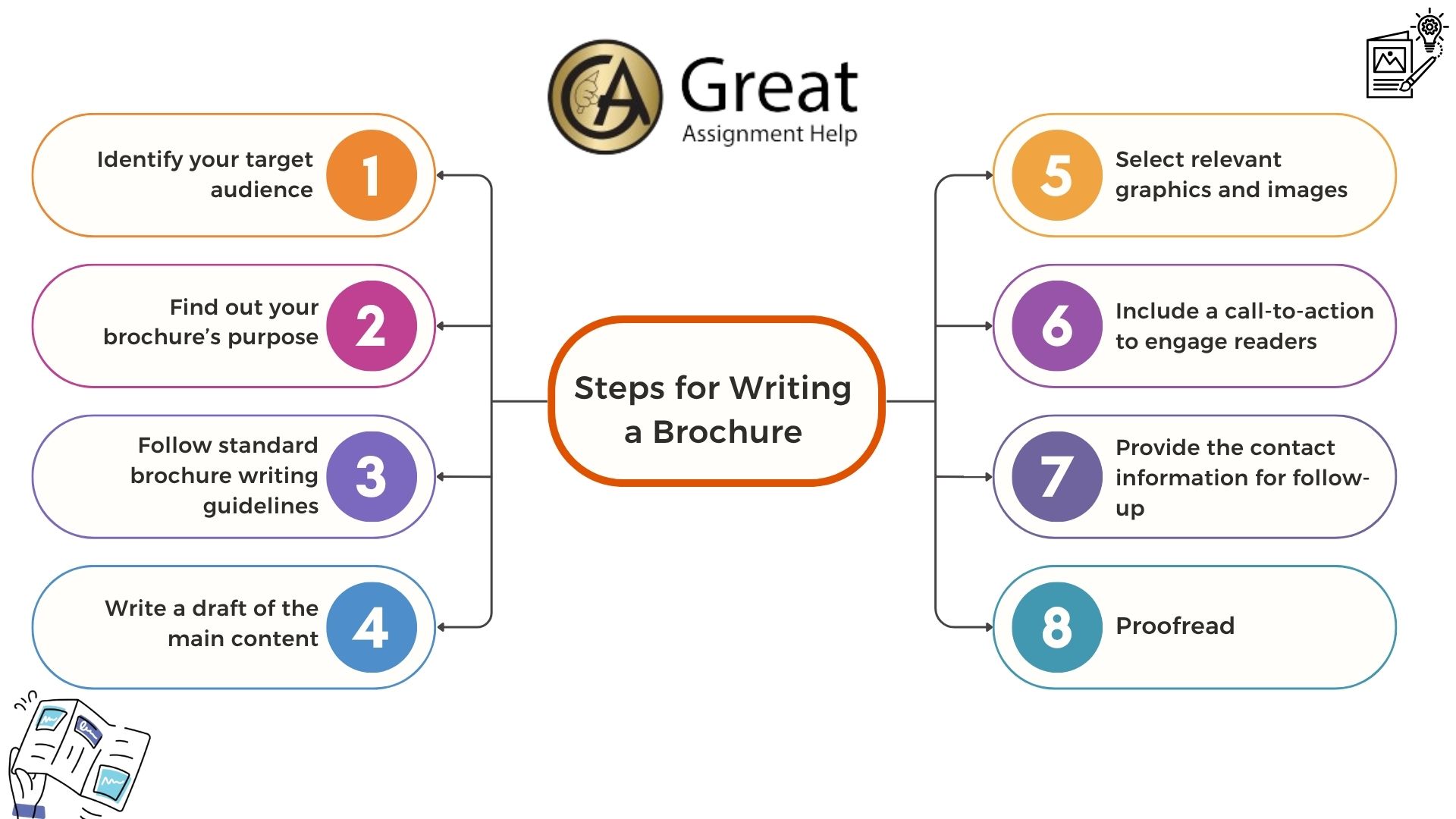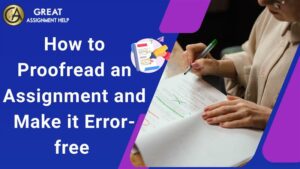A brochure is a powerful marketing tool that will help businesses to grab the attention of potential customers. Often, companies will use brochures to showcase their products, services, and benefits to their customers. Usually, traditional brochures will be printed on glossy paper and handed out directly to customers. But nowadays, digital brochures, or e-brochures, have become more common. A standard brochure will usually consist of a single sheet of paper folded into three sections. This format of brochure will be convenient for you to read and distribute manually. Do you know how to write a brochure to promote your business? If you have no idea about the steps for writing a brochure, continue reading this blog and get valid insights.
What is a Brochure?
A brochure is a small booklet or pamphlet that provides information about a company, product, or service to inform and engage potential customers. This document can be either printed or accessed in digital form. Businesses will mostly use brochures for promotional and advertising purposes. Typically, a brochure will feature images, text, and other visual elements that highlight key benefits and unique selling points of the company or product.
Key Elements of a Brochure
What to include in a brochure? If you want to create an effective brochure, then first you should be aware of its key elements. Moreover, by knowing these elements, you can also easily plan and outline your brochure. The following are some major elements of a brochure you should include while preparing it
Title
When you create a brochure, start with a catchy title. Particularly, with a good title, you can grab your reader’s attention and make them read your brochure. If you wish to create an attractive title, then consider using words or phrases that trigger your readers’ emotions, like fear, aspiration, or joy. For instance, in the title, you can highlight a problem someone might face, like not being able to afford a gift.
While creating the brochure title, you can also use these strategies
- Appeal to the reader’s sense of being smart or savvy. For example, you can suggest that choosing a particular brand is a sign of intelligence.
- Create a vivid setting or scenario that resonates with the product. This will help you transport the reader to a desirable situation.
- Go against common trends or expectations. By doing so, you can make your title stand out and be more memorable.
- Directly state a problem or pain point that your product or service solves. This will help your readers quickly understand the benefits.
All these approaches will help you create catchy brochure titles that resonate with your target audience and draw them in.
Reputation Claims
When writing a brochure, include statements that highlight your service’s reputation. This will not only help you grab your reader’s attention but also make them utilize your service. Examples of reputation claims include awards, rankings, or recognition, such as “Top-rated restaurants in Delhi” or “Trusted by millions of customers worldwide”. Simply by including these details in your brochure, you can build credibility and make your service more appealing to potential customers.
Testimonials
In your brochure, include testimonials from happy and satisfied customers. This will boost the credibility of your service. Usually, testimonials that highlight a specific, positive experience will have the power to make a big impact. For example, if a customer says, “I was amazed by their attention to detail. They customized my trip perfectly, and the tour guide was incredibly knowledgeable. The whole experience was seamless and enjoyable!” This kind of feedback can reassure potential customers about the quality of your service.
Call to Action
Also, in your brochure, add a Call-to-Action (CTA). A CTA is a phrase that will encourage the readers to take a specific action. Marketers will often use CTAs to drive results. In a brochure, through a CTA, you can prompt readers to engage with your service. Examples of CTAs include “Sign up for a free consultation,” “Book now,” or “Get a quote today.” By including a clear CTA, you can encourage readers to take the next step and transform them into your customers.
Steps for Writing a Brochure

Brochure creation is not just about writing the text. In addition to text, you should also focus on the visual presentation that includes the layout, images, and overall design of the brochure. Specifically, to complement the content and make your brochure visually appealing, you should consider essential design elements like font, color scheme, and graphics. Are you clueless about how to write a brochure? If yes, then follow these steps for writing a brochure
1. Identify your target audience
Before you begin writing your brochure, first identify your target audience. Finding out the target audience will help you create a brochure that speaks to their interests and needs. This involves tailoring your language, imagery, and content to resonate with your audience. Especially, when you determine your target audience, you should consider factors like age, geographic location, and customer needs and preferences.
2. Find out your brochure’s purpose
By using a brochure, you can persuade, inform, entertain your readers, or achieve a specific goal. So, before you create a brochure, make sure to define its purpose. However, in academic settings, you will usually need to determine this purpose yourself, unless your professor gives specific guidance.
3. Follow standard brochure writing guidelines
When creating a brochure, strictly follow the standard writing guidelines and format. You need to use simple and clear language that is easy to understand, and align the text with the images. Also, in your brochure, you should avoid using jargon and complex terms.
4. Write a draft of the main content
Preparing a brochure is different from writing academic papers. In a brochure, you will have only limited space and so you need to be selective with the text you use. To create an effective brochure, follow these guidelines
- Use short sentences and bulleted lists to directly convey information.
- Leave some white space to make the content easy to read.
- Include interesting facts to grab the reader’s attention.
- As space is limited, avoid using too much text.
- Write the content in active voice instead of passive voice.
- Don’t forget to leave room for graphics because they are an essential part of a brochure.
When preparing a brochure, start by creating a rough draft of the text, and be prepared to make adjustments later if the graphics don’t fit well with the content.
5. Select relevant graphics and images
To enhance the quality of your brochure, it is essential to include graphics. For your brochure, carefully choose relevant images, photos, or infographics. Adding visual elements and examples will make the text more engaging and attractive to readers. Furthermore, it will also enhance readability.
6. Include a call-to-action to engage readers
In your brochure, include a call-to-action to tell your readers what to do next. The CTA could be visiting a website, making a phone call, or signing up for a service. Note that the CTA you include should fit the purpose of your brochure and your marketing goals.
7. Provide the contact information for follow-up
Don’t forget to add contact information in your brochure, such as phone number and email address. In your brochure, you can place the contact details in a noticeable spot without dedicating an entire panel to it. If your call-to-action encourages readers to get in touch, consider adding more details like your website URL and postal address.
8. Proofread
Finally, before printing or publishing your brochure, proofread and edit it multiple times to eliminate errors. Your brochure should contain only the relevant information, and it should be error-free in terms of grammar, capitalization, and spacing.
The Bottom Line
By now, you will have understood how to write a brochure. If your professor asks you to create a brochure as a part of your marketing assignment or if you want to create a brochure for your business, follow the steps and tips we have suggested in this blog. In case it is challenging for you to prepare an effective brochure, contact us for help. The subject experts on our platform will offer you help with writing brochures and other academic papers as per your requirements at an affordable price.



